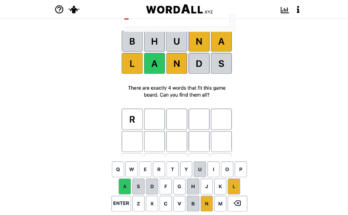
Eating healthier is a worthy goal in its own right, rather than just a means to an end for weight loss. But if you’ve ever tried to change your eating habits, you likely know the mess of misinformation that is online diet culture.
There seems to be only a few things that everybody agrees on when it comes to nutrition, so no matter your health goals, here are science-backed tips for healthy eating that don’t require you to count calories.
Get in some lean protein
I like to think of protein as the jock of the three macronutrients (fats, carbs, and protein). It’s the building block of your muscles, and foods high in protein tend to be the most filling. Think meat, fish, poultry, eggs, legumes (like black beans and chickpeas), and soy products (like tofu or tempeh). Our protein guide takes you through how much you need depending on your health goals, from losing weight, to building muscle, to growing stronger nails and hair.
Focus on your fiber
Fiber improves satiety and, pretty famously, normalizes bowel movements. If you struggle with putting down a bag of chips, swapping out less nutritious snack foods for high fiber options will help you naturally feel full. Examples include whole grains, beans, and most fruits and vegetables. Speaking of…
G/O Media may get a commission
Eat more vegetables
This is another one of those rare points of agreement in nutrition. Vegetables are major sources for important nutrients and vitamins to help your entire body function. It’s that simple, really. Toss yourself a salad and start blissfully laughing. Consider expanding your palate with more types of vegetables, especially going by season.
Go for good fats
The reputation of fat in your diet has come a long way—but that doesn’t make it any less confusing. We’ve broken down different kinds of fats and their benefits. To start incorporating healthy fats into your diet, seek out foods like avocados, nuts, eggs, and fatty fish like salmon.
Cut back on sugar
We’ve covered practical and effective tips to gradually cut sugar out of your diet, and the mix of opinions on how your body processes sugar is headache-inducing (like a so-called sugar crash). But what you can do is focus your sugar sources on apples, berries, and other fruits that at least come with fiber and vitamins to help all your systems run in tip-top shape.
You don’t have to sacrifice taste
Despite decades of harmful rhetoric—partly from old-timey children’s television—healthy food really does taste good. If you’re skeptical, try out some of the best ways to make healthy food taste better. Plus, with fall here, there’s no better time to elevate your veggie game by roasting them to delicious perfection. You don’t need to become a master chef, either—there are plenty of cheap and lazy ways to eat healthy.
Get better sleep
The most underrated healthy eating tips has nothing to do with food. Studies show that getting less than seven hours of sleep on a regular basis can lead to difficult-to-control hunger and cravings. Here’s how to get the most of out your sleep.
Start with your mindset
Healthy eating should be about treating yourself (#selfcare), not punishing yourself. To practice mindfulness, consider reading up on intuitive eating. Additionally, there are concrete tips to make healthy eating easier on yourself, like reorganizing your refrigerator around ready-to-grab healthy options. Ensuring you always have healthy options on hand can help less-than-perfect decisions when hunger strikes.
At the same time, remember to practice patience with yourself. No one diet is perfect, and neither is any one person.



